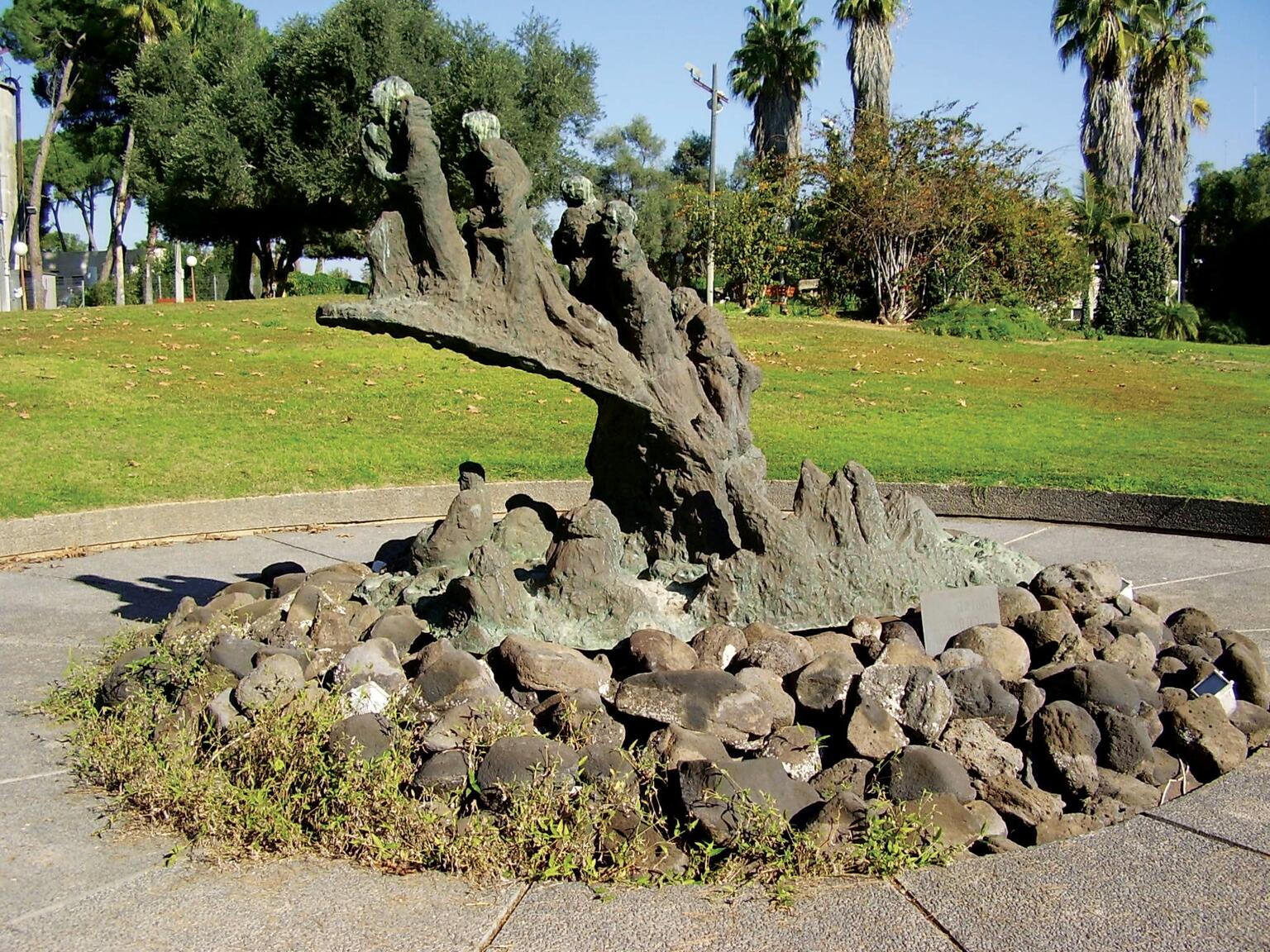Holocaust and Rebirth (Kibbutz Nezer Sereni, Israel)
Batia Lichansky
1965–1968
Kibbutz Netzer Sereni was established by Holocaust survivors from the Buchenwald concentration camp. In fact, its original name was Kibbutz Buchenwald. It is now named for Enzo Sereni, an Italian Zionist leader. “Netzer” means a new shoot, as in the biblical verse: “But a shoot shall grow out of the stump of Jesse; a twig shall sprout from his stock” (Isaiah 11:1). This idea, of a new branch sprouting from the stump of a tree, was the inspiration for Batia Lichansky’s monument. Atop a twisted branch that looks like it has been felled by lightning, the figures of men, women, and children climb upwards, faces turned to the sky.
Credits
Photo: “PikiWiki Israel 41120 Spohn Farm in kibbutz Netzer Sereni,” by Dr. Avishai Teicher, Pikiwiki Israel. Used under a (CC BY 2.5) license.
Published in: The Posen Library of Jewish Culture and Civilization, vol. 9.
You may also like
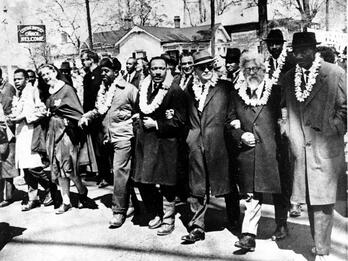
Abraham Joshua Heschel Marching with Martin Luther King in Selma, Alabama, March 21, 1965
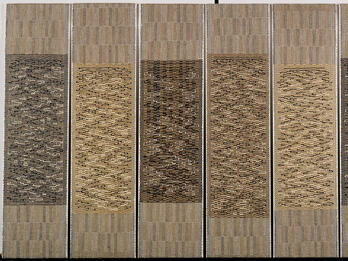
Six Prayers
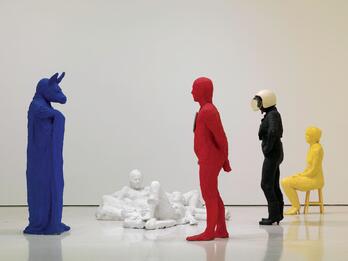
The Costume Party
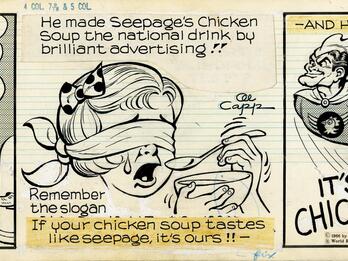
“Chickensouperman” from L’il Abner
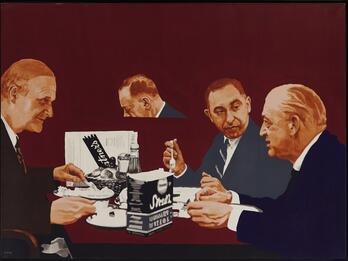
Lunch at Ratner’s
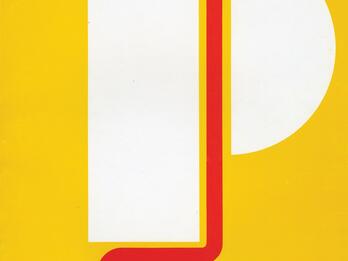
Primary Structures, cover
Creator Bio
Batia Lichansky
Batia Lichansky was the first woman in Israel to sculpt national monuments and memorials. Born in Malyn, Ukraine, Lichansky immigrated to Palestine in 1910, beginning her studies in 1918 at the Bezalel School of Arts and Crafts in Jerusalem before traveling to Rome, Berlin, and Paris to further her artistic training. In addition to her public sculptures, which move stylistically between realism and expressionism, Lichansky produced more than one hundred busts of prominent cultural figures, including Israeli authors, artists, and political leaders. Her contributions to Israeli art earned her the Dizengoff Prize for painting and sculpture in 1944 and 1957.
Related Guide
Post-Holocaust Jewish Cultural “Spaces”
Postwar Jewish communities created new spaces globally, as American Jews moved to suburbs, Israel established sovereign spaces, and a new European Jewish identity emerged.
Related Guide
Visual and Material Culture in the Mid-Twentieth Century
Jewish visual art flourished and diversified in the postwar period, reflecting the social and political transformations taking place in the world.
You may also like

Abraham Joshua Heschel Marching with Martin Luther King in Selma, Alabama, March 21, 1965

Six Prayers

The Costume Party

“Chickensouperman” from L’il Abner

Lunch at Ratner’s



